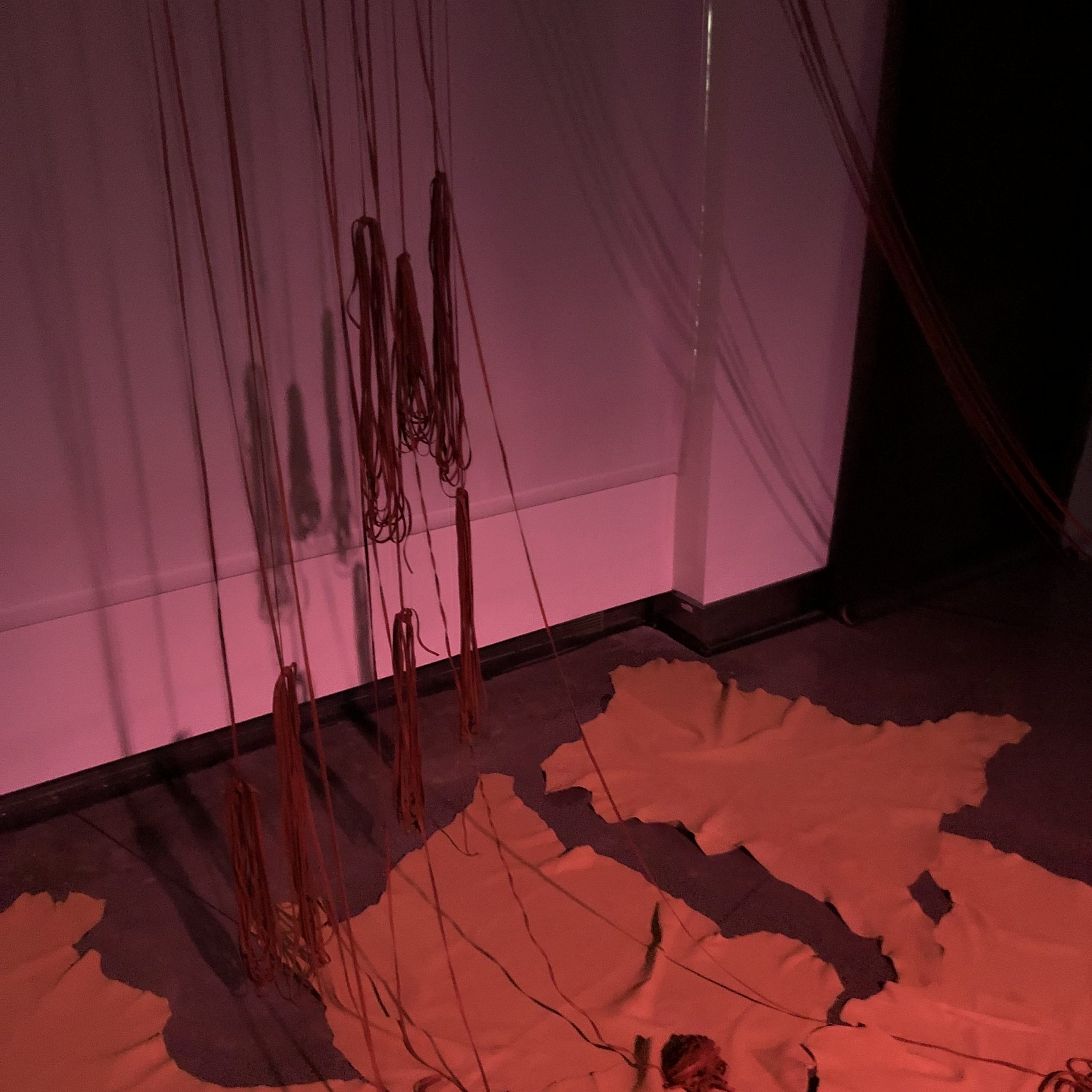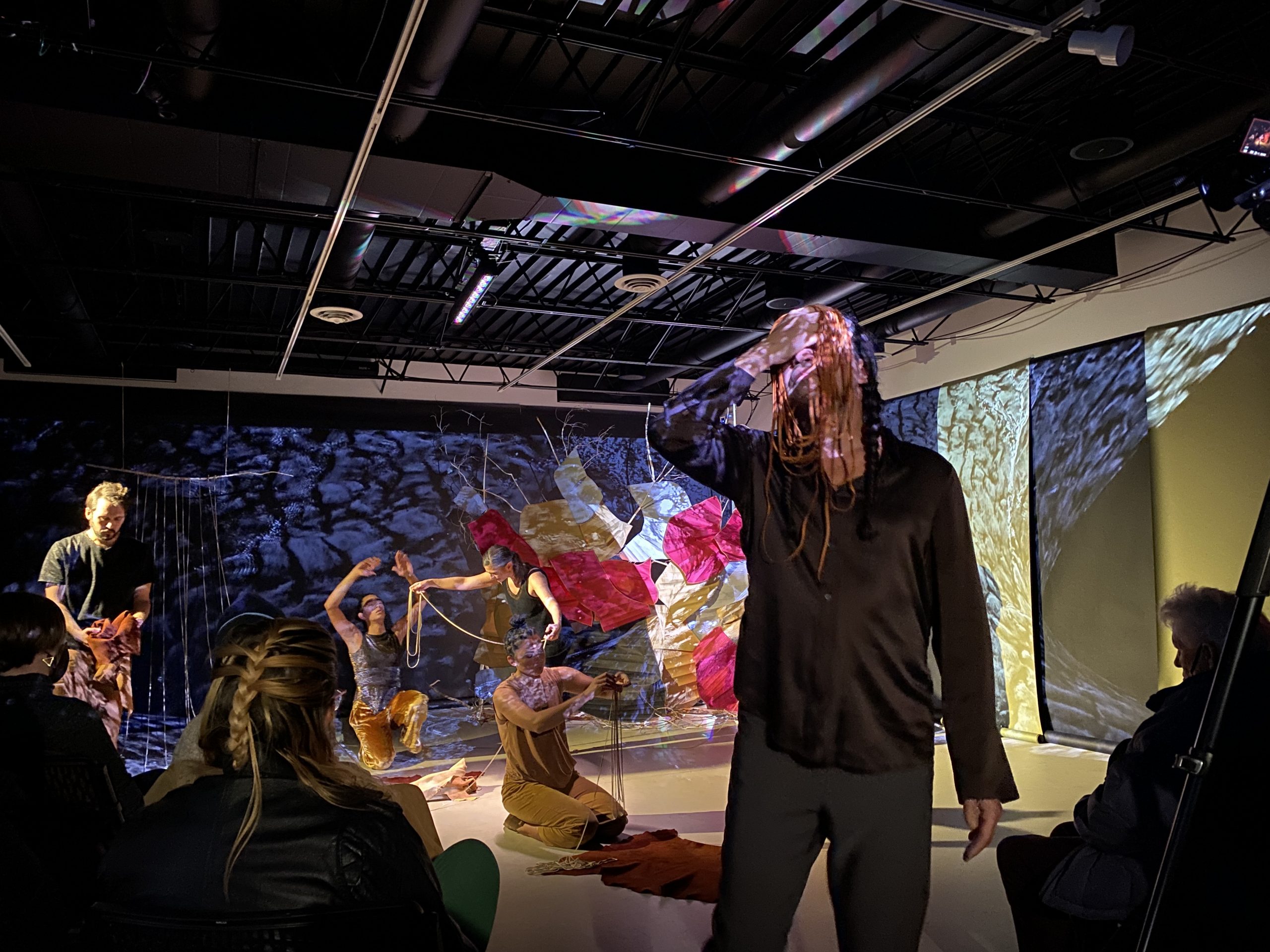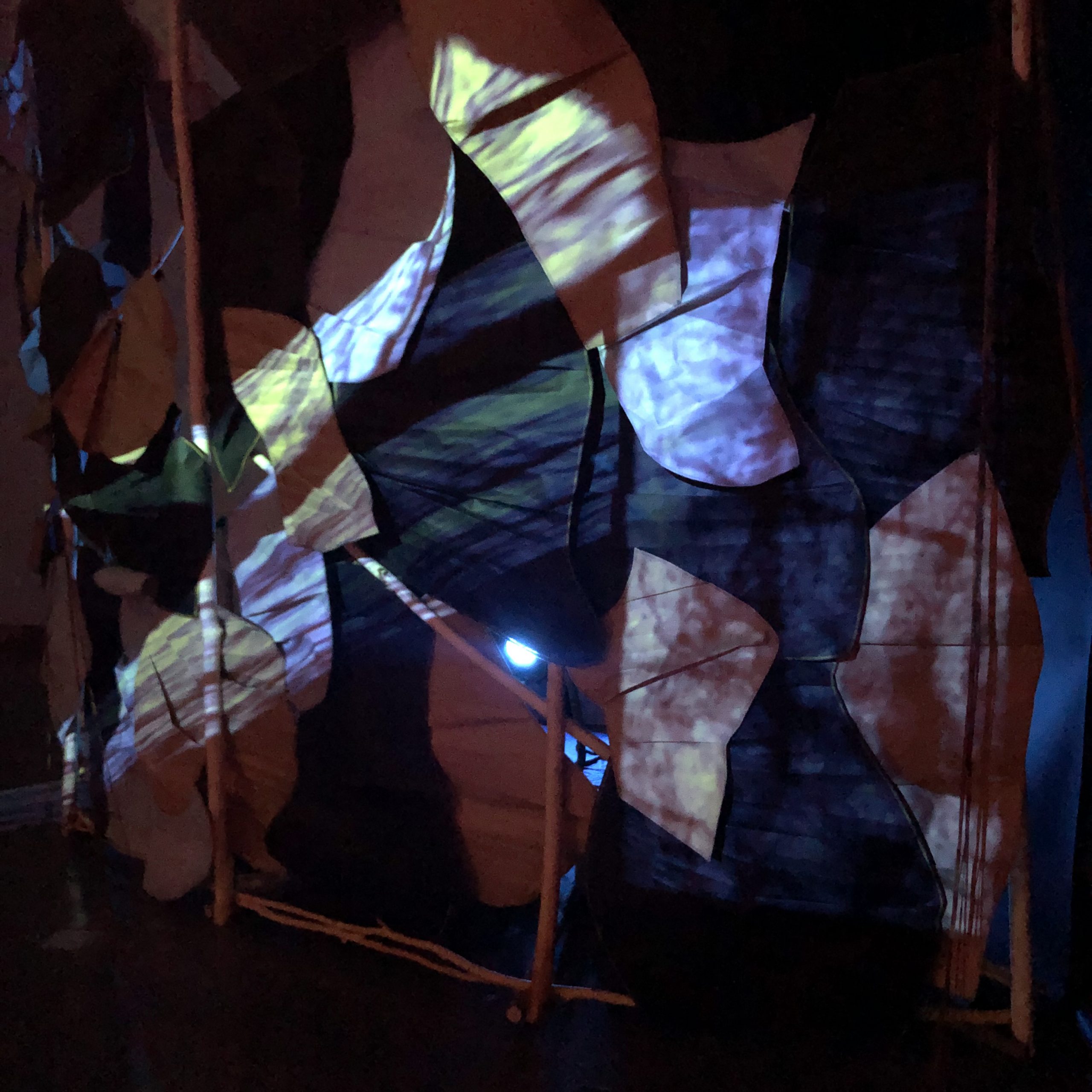In this exchange between Alondra M. Garza and myself, we reflect on the project, she who lives on the road to war by Rosy Simas Danse. This project is on view at both the Weisman Art Museum and All My Relation Arts September 10, 2022 – December 17, 2022. See ticket information online.
Check out this reflection in zine format.
—

Rosy Simas Danse, “she who lives on the road to war” (2022) at All My Relations Arts. Photo Credit: Alondra M. Garza
AG: How did you feel throughout the experience? Emotionally and/or physically.
EM: I felt contemplative throughout much of the performance because there was a lot to look at throughout the space as the performers moved in relation to each other and the objects in the space, such as leather hides and long leather laces. I was also curious to watch the interactions with the audience unfold, especially with the leather laces handed out around the room.

Rosy Simas Danse, “she who lives on the road to war” (2022) at Weisman Art Museum. Photo Credit: Ellen Mueller
AG: Was there a special moment or movement of the artists that caught your attention or immersed you in the experience?
EM: It caught my attention when I noticed one performer’s movement influencing another person’s movement and so on. Those physical echoes across the space felt directly connected to the themes that were named, such as gathering, resting, and grieving. I also thought the performers’ responses to the soundscape were well improvised, helping to tie together the visual and audio components with the movement elements.

Rosy Simas Danse, “she who lives on the road to war” (2022) at All My Relations Arts. Photo Credit: Alondra M. Garza
AG: Did you understand the message of the performance? If so, what helped you understand? the body movements, the sound, or the video?
EM: I read the project description before arriving, so I had some of those conceptual themes in my head. I felt like the sound and video did a lot to support the transitions and phases of the movement throughout. The performers responded to the shifts in sound and video helping the experience feel like a cohesive whole, while preserving specific moments of interest throughout. The entire experience invited slow looking and attention to detail.

Rosy Simas Danse, “she who lives on the road to war” (2022) at Wiesman Art Museum. Photo Credit: Ellen Mueller
EM: This performance took place at multiple venues – where did you see the experience and how did that context and the arrangement of space affect you?
AG: I saw the performance at All My Relations Gallery. The space was arranged in a way that the dancers came out from the back and walked into a hallway to get to the main stage where the installation was. People could sit in the hallway area as well, and that is where I was sitting. I got to see the dancers next to me while they were walking into the space. That made me feel integrated as part of the performance since some of the projections were pointing at me as well. The people sitting in front of the stage area had to look back and see the dancers walking through that hallway, and they saw that they were next to me. I not only felt a part of it because of that but mainly because I feel at home at that gallery and can relate to the Indigenous message of the performance since I am part Indigenous of the Americas. It was definitely more impactful to me to have seen it at that gallery as well, as I noticed some of the public were Indigenous as well and the staff there are Indigenous.

Rosy Simas Danse, “she who lives on the road to war” (2022) at Wiesman Art Museum. Photo Credit: Ellen Mueller
EM: I would also like to ask you about your understanding of the performance – what were the key elements for you and what was most impactful?
AG: Using the nature sounds, the sticks, and the leather that is all part of our ancestral land was beautiful. Those were the main tools used, as well as the body language. All these elements together had an impact on me, as to understand our connection to this land. The way that their bodies were interacting with each other also made me think of our connection to other indigenous and non-indigenous people and how nature connects us as well. Their body language indicated meditation, grief, love, and energy. After reading the statement about the performance, I thought it was great that they focused on how the dancers were connected to Rosy Simas’s studio in their own artistic ways, and that was something great to hear about at the after-talk that I stayed for. I thought it added to the richness of how we connect to one another outside of the performance.
Overall, this was a very thoughtful performance and an immersive experience where I felt so many emotions that transported me into nature and connection. Fantastic!
—
Disclosure: I know Alondra M. Garza from when I was directing the MFA program at MCAD.